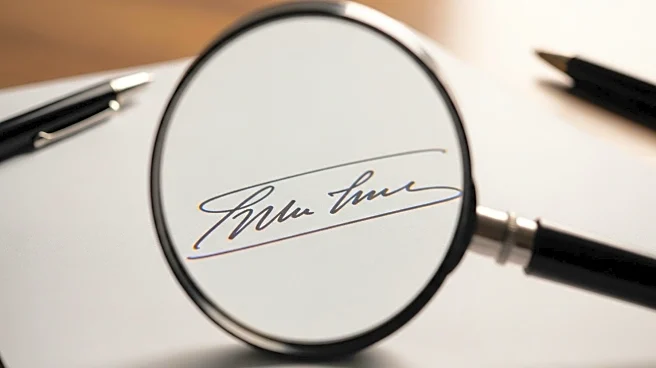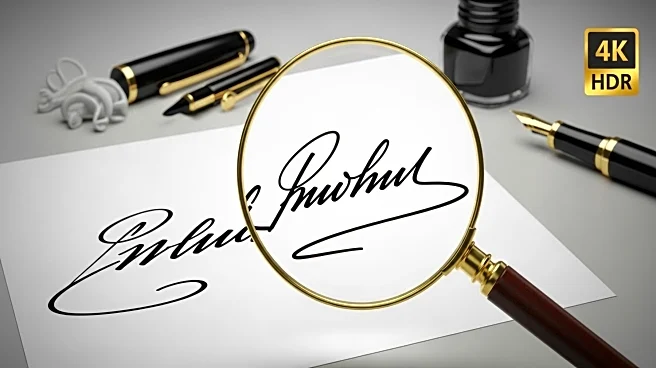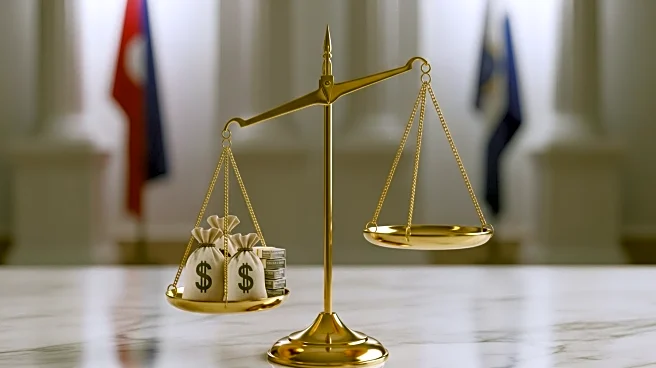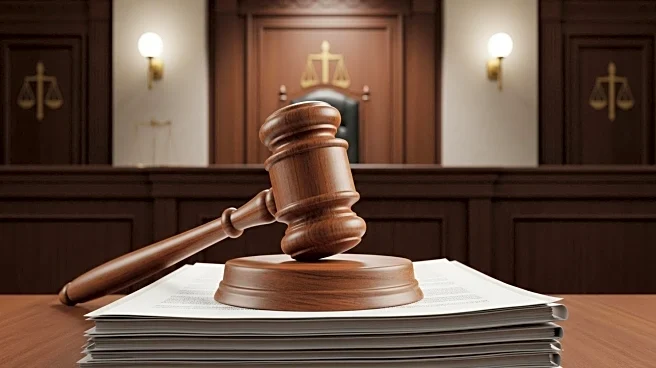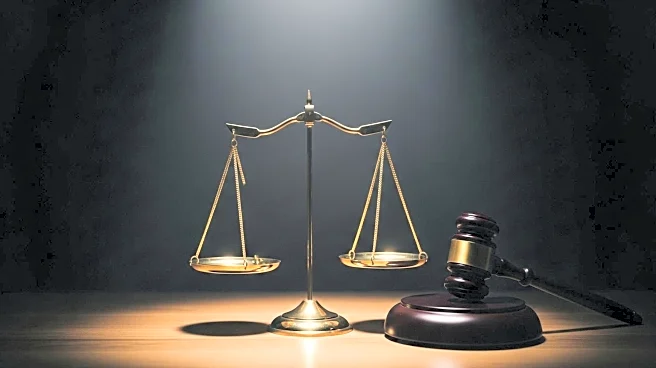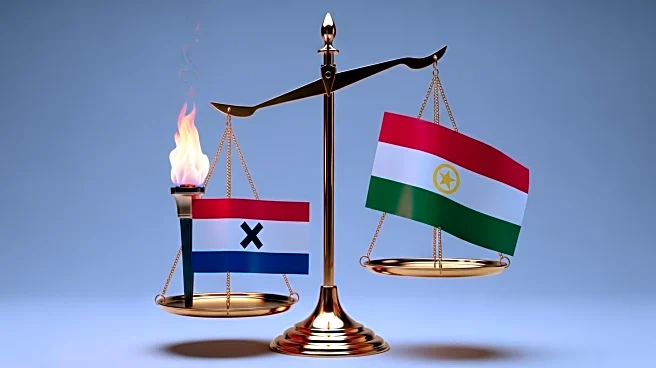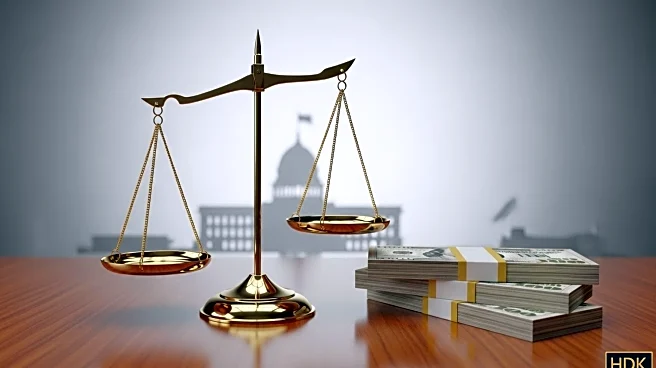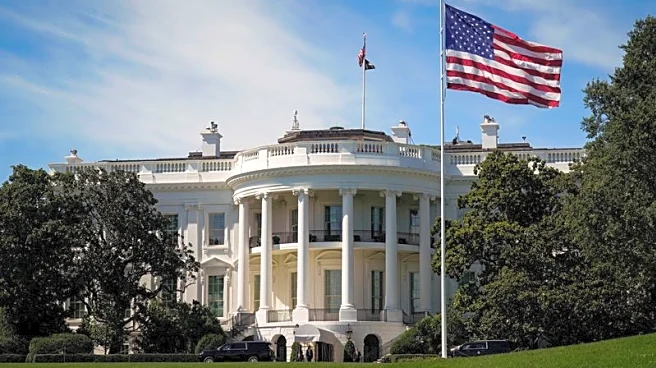What's Happening?
Handwriting analysts have been examining President Trump's signature, which is prominently featured on his executive orders. The signature is described as angular, harsh, and large, leading analysts to suggest it reveals aspects of his personality. Graphologists, who study handwriting, argue that the style and form of a person's writing can provide insights into their character. Despite debates over the scientific validity of graphology, experts in the field maintain that handwriting analysis is a legitimate behavioral science. Valerie Weil, a graphologist, explains that the ambiguity in Trump's signature suggests a desire to keep his true self private, while the compact nature of the letters indicates a need for control. The angularity and straight lines in his signature are interpreted as signs of aggression and intelligence.
Why It's Important?
The analysis of President Trump's handwriting offers a unique perspective on his personality, which could have implications for understanding his leadership style and decision-making processes. If handwriting analysis is accurate, it may provide insights into how he approaches governance and interacts with others. The emphasis on control and aggression in his signature could reflect his approach to policy and negotiations, potentially impacting U.S. politics and international relations. Understanding these traits might help political analysts and the public anticipate his actions and strategies, influencing political discourse and public opinion.
What's Next?
As handwriting analysis continues to be a topic of interest, further studies and discussions may arise regarding its validity and application in understanding public figures. Graphologists may continue to analyze other aspects of President Trump's handwriting, such as his notes and letters, to gain deeper insights into his personality. This could lead to broader discussions about the role of behavioral sciences in political analysis and the potential for using such methods to understand other leaders.
Beyond the Headlines
The exploration of handwriting analysis touches on broader themes of privacy and the ethics of interpreting personal traits from indirect sources. It raises questions about the balance between public interest and personal privacy for public figures. Additionally, the debate over the scientific legitimacy of graphology highlights the challenges in distinguishing between pseudoscience and legitimate behavioral sciences, prompting discussions about the criteria for scientific validation.
